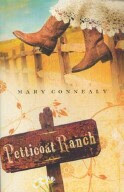Character conflicts, part one

by Mary Connealy What would Gone with the Wind be like if Scarlett and Rhett had gotten along beautifully from the very beginning? What if Romeo and Juliet had been fixed up by their parents who were close friends? What if Ariel hadn't been a mermaid wearing a girl suit? Would we even remember them, would we have kept turning the pages? Conflict is what hooks a reader and makes the story interesting. If everyone gets along fine, there's no book. A romance novel needs each character to have two conflicts, an external conflict and an internal conflict. Yes, you can have an "it's us against the world" theme. Yes, you can write a book where the h/h are compatible and work for a common goal, but that's not a romance novel—that’s the Peace Corp. If you want to write within the romance formula, get yourself an external and internal conflict. External conflict is the easy one for me. External really is only one because it's the story—the plot—the mess you make tha